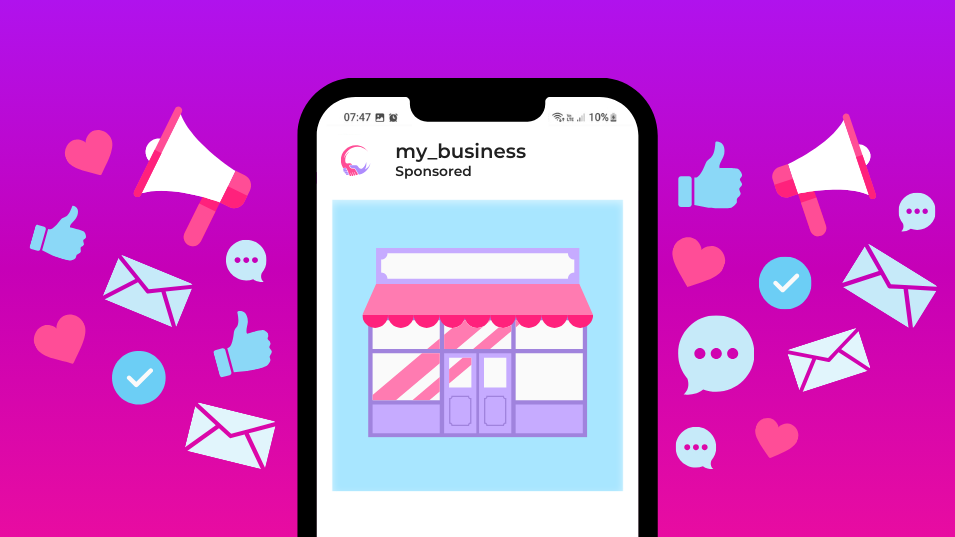
14 Oct A Guide to Choosing the Right Social Media Platforms for Your Business
Is it just us, or does it seem like a new social media platform pops up every year? It’s no surprise, though—we’re living in the age of information, where if everything isn’t at our fingertips, it’s a big problem! Customers now expect everything at the click of a button, and businesses are pivoting to meet the growing demands of the digital era.
Social media has become a powerful tool for communication. Not just for catching up with old friends, but for connecting with customers. While it’s tempting to be on every social media platform, this doesn’t work for a number of reasons. Instead, it’s best to create a strategy that allows you to determine what social media channel can work for your business.
To help you along, here’s our guide to choosing the right social media platform for your business:
Facebook: The All-Rounder
According to statistics shared by Meta, nearly 93% of businesses are active on Facebook. While Facebook is the archetype by which every other social media platform has been modelled, it’s been labelled as “cheugy” by the younger generation – this is Gen Z slang for “old” and “outdated.”
Despite its reputation for being a platform for posting pictures of your kids and sharing random status updates, it does have relevance for certain businesses.
Uses: Brand awareness, community building, customer service, and advertising.
Ideal for: Businesses looking to build a community, engage with a broad audience, or run targeted ads.
Key features: Facebook Pages, Groups, Marketplace, and Ads Manager.

Instagram: The Visual Storyteller
It’s an exceptionally visual platform, carefully curated for users, which can be both time-consuming and labour-intensive. Businesses without strong visual content, like SaaS providers or chemical processing companies, may struggle to engage their target audience. However, industries such as fashion, food, travel, beauty, and home décor are more likely to thrive with the right marketing strategy.
There are over two billion active monthly users on Instagram, and it’s incredibly popular amongst younger audiences, such as Millennials and Gen Z. Using this platform can make businesses more relatable through IG Stories and Lives, and it’s a great way to sell products.
Uses: Visual branding, influencer marketing, product promotion, and user-generated content.
Ideal for: Businesses with visually appealing products or services (e.g., fashion, food, travel, lifestyle).
Key features: Stories, Reels, Shopping, and IGTV.

Twitter: The Real-Time Conversationalist
Statistics show that X has around 335.7 million active users each month. However, the platform has seen a steady decline (around 5%) in users, with many experts saying this is due to a change in leadership and the need to pay a monthly subscription to be verified on the platform.
Despite this, X still remains a relevant marketing tool for businesses and individuals. It’s a great platform for businesses who are eager to connect with their customers. After all, many consumers turn to X for customer support, allowing businesses to address concerns, resolve issues and demonstrate their ability to deliver excellent customer service. In turn, this allows your brand to build customer loyalty.
Uses: Real-time updates, customer support, thought leadership, and industry engagement.
Ideal for: Brands that want to engage in trending conversations, provide customer support, or build authority in a niche.
Key features: Tweets, Threads, Twitter Spaces, and Moments.

LinkedIn: The Professional Network
LinkedIn has over one billion users across the world, 67 million of which are companies. It’s a great platform to use if you’re a B2B company, offer professional services (law firm, accountants, etc), or if you’re a recruiting or staffing agency. It’s also a fantastic platform to drive traffic to your website, identify quality leads, and share your expertise with the general public on the platform. According to LinkedIn’s own data, it’s 277% more effective for lead generation than other social platforms, especially for B2B marketers.
This is because the platform makes it easier to reach decision-makers, industry experts and professionals likely to be interested in business-related content. Sharing valuable insights and building strong, long-term connections with your network, allows your business to establish itself as a thought leader and expert in
Uses: Networking, B2B marketing, thought leadership, and recruitment.
Ideal for: B2B companies, professional services, and businesses looking to establish authority and build professional relationships.
Key features: LinkedIn Pages, Articles, Groups, and Ads.

TikTok: The Viral Content Hub
TikTok is the new kid on the block, but it’s already established itself as a marketing powerhouse, and has quickly become one of the fastest-growing platforms of all time. While TikTok has gained a reputation for dance videos, viral challenges, and becoming the new “Google” for Gen Z, it actually has an audience that’s quite diverse.
According to the platform’s recent data, nearly 50% of users are between 25 and 44 years old, so chances are, your audience is on TikTok looking for recipes and dance moves.
The platform creates a fun and interesting way for businesses to engage with their audiences. However, TikTok thrives on creative, engaging and entertaining short-form content, so more corporate or conservative brands may struggle to find their voice on this platform – but never say never.
Uses: Viral marketing, short-form video content, influencer collaborations, and brand challenges.
Ideal for: Brands targeting younger audiences or looking to create viral content and engage with creative trends.
Key features: Short videos, Duets, Hashtag Challenges, and TikTok Ads.

Choosing the Right Platform for Your Business
Different platforms have different advantages. So, you want to consider your social media goals before committing to a specific social media channel. Here are a few questions to ask yourself:
- Do you want to increase sales/conversions?
- Are you looking to increase brand awareness?
- Do you want to build a community?
When you can answer these questions and create a list of your goals, you’ll have a better opportunity to determine which platforms will work for your business.
Another factor to consider is time. Social media is more than just posting a few memes and the latest sales pitch. It’s about engaging with your audience and building a foundation for brand loyalty and trust, so you want to create strategies that align with this. Unfortunately, not everyone has the time for this. For example, creating engaging short-form videos for TikTok can take quite some time, so you want to select platforms that work with your budget and time.
The most important question? Where is your audience? Start by checking your analytics. This can be a great way to determine where your audience is coming from and what they’re clicking on. This data can provide you with a starting point when helping you determine which social media platforms to select.
The Takeaway
There are around 15 social platforms, and more popping up each day, so we don’t blame you for feeling overwhelmed when choosing a platform that works for your business.
With the right information at your fingertips (*cough, cough our expertly gathered information above) you can choose social media platforms that stays true to the voice and goals of your brand. Remember – quality over quantity!
